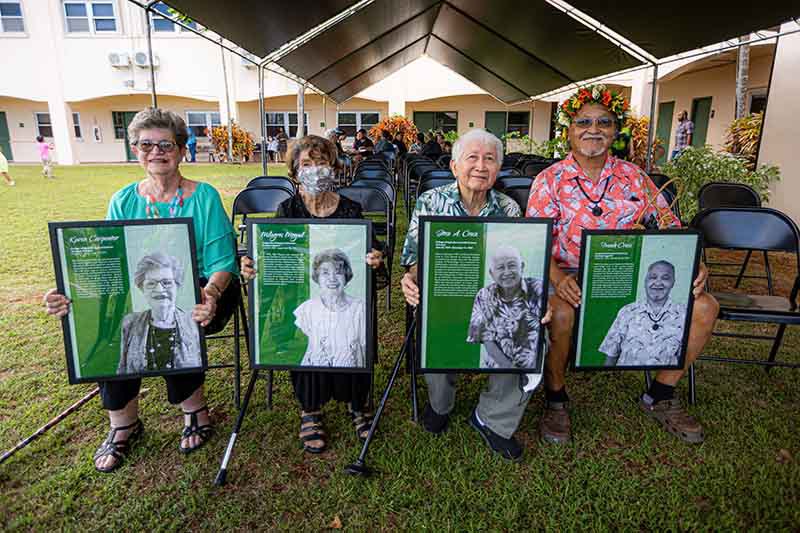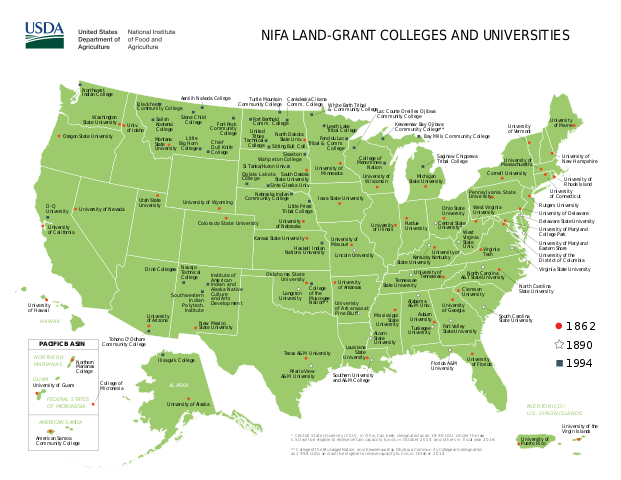About Our Land Grant
About Our Land Grant
About Our Land Grant

University of Guam
An 1862 Land Grant University
Instruction: College of Natural & Applied Sciences
Research: Western Pacific Tropical Research Center
Extension: Cooperative Extension & Outreach
What is a Land-Grant university?
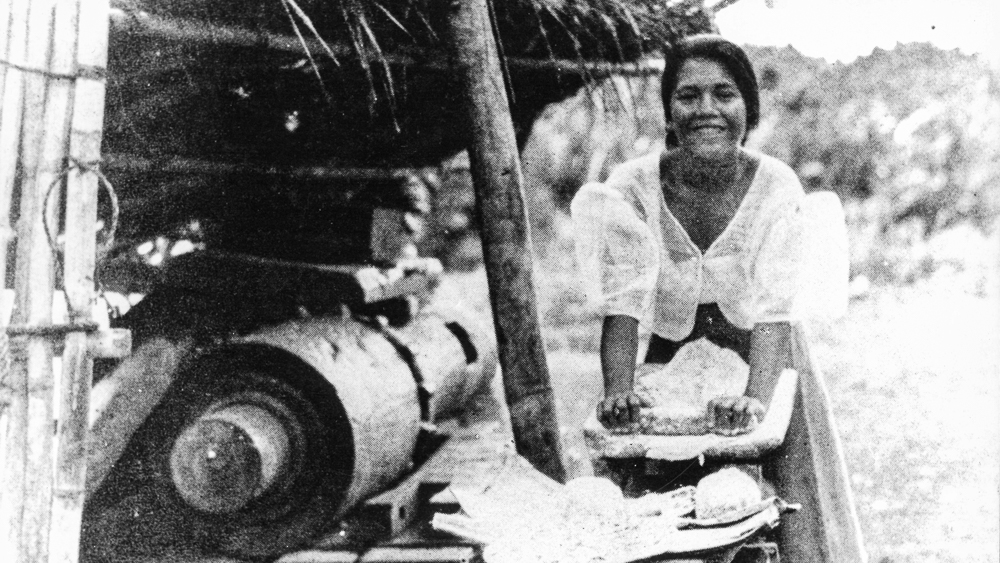 A land grant is a gift of real estate — land or its use privileges — made by a government. A Land-Grant college or university is an institution that has been designated by its
state legislature or Congress to receive the benefits of the Morrill Acts of 1862, 1890, and 1994. The Morrill Land-Grant Acts are U.S. statutes that allowed for the
creation of land-grant colleges using the proceeds from sales of federally owned land,
often obtained from Indigenous tribes.
A land grant is a gift of real estate — land or its use privileges — made by a government. A Land-Grant college or university is an institution that has been designated by its
state legislature or Congress to receive the benefits of the Morrill Acts of 1862, 1890, and 1994. The Morrill Land-Grant Acts are U.S. statutes that allowed for the
creation of land-grant colleges using the proceeds from sales of federally owned land,
often obtained from Indigenous tribes.
Why were Land-Grant universities created?
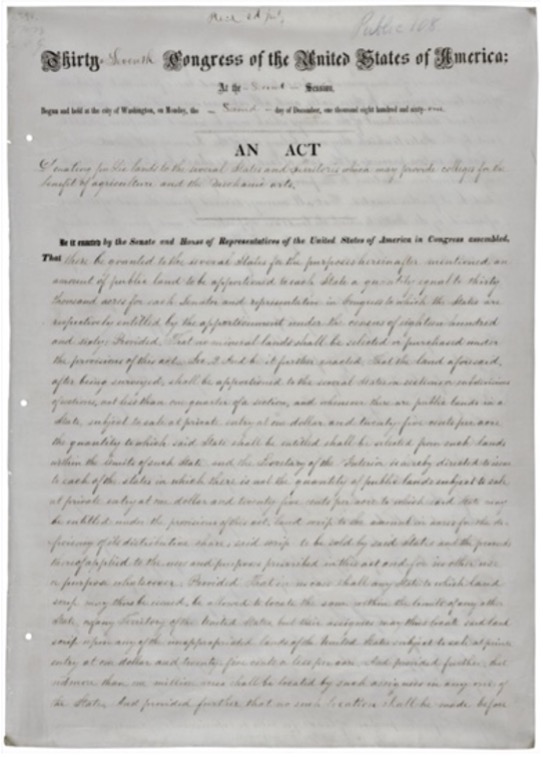 The first Morrill Act reflected a growing demand for agricultural and technical education
in the United States, as higher education was still widely unavailable to many agricultural and
industrial workers.
The first Morrill Act reflected a growing demand for agricultural and technical education
in the United States, as higher education was still widely unavailable to many agricultural and
industrial workers.
The Morrill Act was intended to provide a broad segment of the population with a practical education that had direct relevance to their daily lives.
The original mission of these institutions was to teach agriculture, military tactics, and the mechanic arts as well as classical studies in response to the industrial revolution so members of the working classes could obtain a practical education.
Source: Association of Public & Land-Grant Universities
How did UOG gain Land-Grant status?
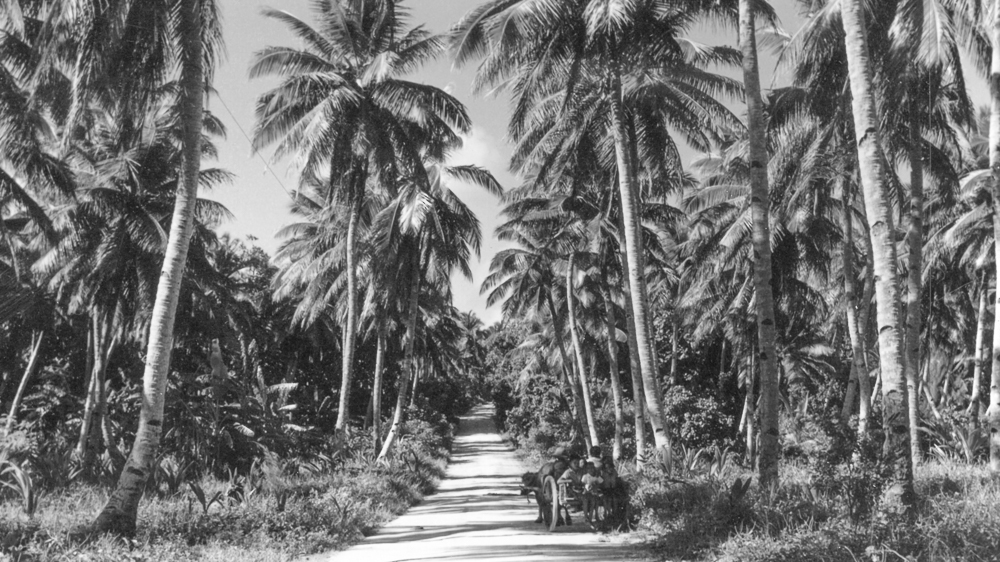
A Special Education Amendment in 1972 allotted $3 million federal dollars to colleges and universities in the U.S. territories, in lieu of 30,000 acres as decreed in the Morrill Act of 1862, and accorded the status of land-grant institution to the University of Guam.
Who paved the path for UOG's Land-Grant?
The Founding Members
The University of Guam’s 50-year history as a land-grant institution was commemorated and memorialized with a Land Grant Legacy Wall in June 2022. Located in the Agriculture & Life Sciences building on campus, the wall features the portraits and biographies of 15 individuals who paved the way for UOG to carry out the land-grant mission in Guam, putting the University on course to conduct agricultural research and teach the public.
The Land-Grant Legacy honorees:
- Jeff D.T. Barcinas †
- Doris T. Camacho
- Mary Elaine Camacho †
- Karen Carpenter
- Frank B. Cruz †
- Frank Cruz
- Jose A. Cruz
- Alfred S.N. Flores †
- Gabby Guerrero †
- Wilfred Leon Guerrero
- Theodore Iyechad †
- Milagros Moguel
- Rangaswam Muniappan
- Fred Quitugua †
- Bernard Watson †
What are three Land-Grant missions?
Land-Grant Pillar #1: INSTRUCTION
To carry out its land-grant mission to teach agriculture, the mechanic arts, other scientific and classical studies, and military tactics, the University established the College of Agriculture & Life Sciences in 1973, which became the College of Natural & Applied Sciences in 2003.
Nearly every industry on island can benefit from employing a CNAS graduate. Specific to its federal mandate, the college offers baccalaureate and graduate-level agriculture programs in both agriculture and military science, through the UOG Army ROTC Program. Additionally, CNAS administers degree programs in biology, chemistry, computer science, mathematics, and environmental science.
Land-Grant Pillar #2: RESEARCH
The Hatch Act of 1887 instituted the research function of land-grant universities by providing funding to maintain Agricultural Experiment Stations, where original agricultural research could be conducted.
The University of Guam operates four experiment stations under its research arm — the Western Pacific Tropical Research Center. The center concentrates on applied research that will be of practical use to individuals, families, and organizations in the local and regional population.
Research under the Hatch Act can focus on any aspect of agriculture. The scientists of the WPTRC specialize and produce research in aquaculture, soil science, horticulture, invasive species, processing and safe handling of food and agricultural products, forestry, home economics and family life, human nutrition, and rural and community development.
Land-Grant Pillar #3: EXTENSION
The Smith-Lever Act of 1914 instituted the extension function of land-grant universities by providing funding through the U.S. Department of Agriculture to support a Cooperative Extension Service associated with each land-grant institution. This partnership between agricultural colleges and the USDA enables the dissemination of information produced by each institution’s Agricultural Experiment Stations.
The University of Guam carries out its extension function through its Cooperative Extension & Outreach division, which develops non-formal educational campaigns, workshops and trainings, and programs to put practical, relevant information into the hands of community members and organizations.
The extension team at UOG includes eight faculty members and 16 extension agents who work under four program units: Agriculture & Natural Resources, 4-H Youth Development, Family & Consumer Sciences, and Community Development.
Where does UOG fit in the bigger Land-Grant picture?
The Land Grant network
There is one land-grant institution in every state and territory of the United States, as well as the District of Columbia. Certain states have more than one land-grant institution as a result of the Morrill Act of 1890, and some western and plains states have several because of 1994 land-grant tribal colleges.
- 1862 - The first Morrill Act created a land-grant college in every state. Following the Special Education Amendment in 1972, UOG is considered an 1862 Land-Grant institution.
- 1890 - The second Morrill Act sought to extend access to higher education by providing additional endowments for all land-grants but only for states that didn’t make distinctions of race in admissions or that provided a separate land-grant institution for Blacks. The institutions that were founded in each of the then-segregated Southern states as a result of this act became known as “the 1890 land-grants.”
- 1994 - A third land-grant act conferred land-grant statues to Native American tribal colleges in 1994. These colleges are called the “1994 land-grants.”
Source: Association of Public & Land-Grant Universities
